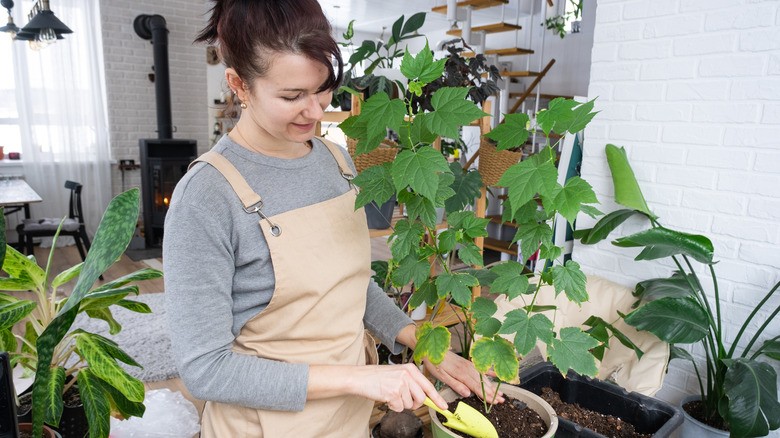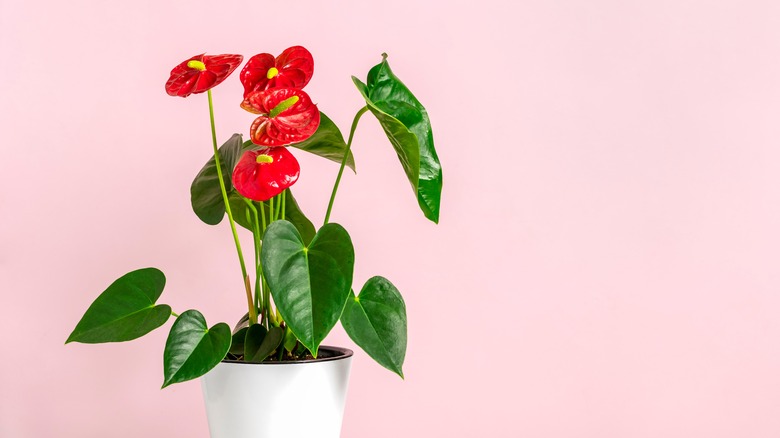Why You Want To Be Cautious About Bringing Flowering Maples Into Your Home
The term flowering maple encompasses a wide range of tropical and subtropical plants in the mallow family, making the name a little misleading. Although they are not related to maple trees, their leaves are similar, which is why they have this common name. Other names by which flowering maples are known include Chinese bellflower or lantern. With their deep evergreen leaves and lovely blooms, it's no wonder folks enjoy them as houseplants. If you are considering adding flowering maples to your in-home collection, be aware that some people have allergic reactions to this plant.
Flowering maples are grown as outdoor perennials in zones 8 and 9 in the U.S. Even if you cannot grow this plant indoors, you may be able to add it to your flower gardens if you live in those warm regions. If not, you may want to consider some equally beautiful alternatives instead of growing flowering maples as a houseplant.
Flowering maple allergies
Whether you are watering, pruning, or cleaning leaves, houseplants must be handled from time to time, and this is a problem with flowering maples. Most people experience some amount of skin irritation after handling this plant, while some people have a more severe reaction. These allergies are a particular concern in homes with children. Even when kept out of reach, the leaves and blooms can fall off and end up in a little one's hands.
Respiratory allergies have also been reported as a problem for some people. The specific reason for these physical reactions to this plant is not widely known, it may be the pollen from the flowers in the air of an enclosed space that creates the issue. Whatever the cause of the allergy symptoms, it simply is not worth your or your family's health to keep a specific plant in the house, especially when there are many beautiful, safe alternatives.
Alternatives
If you love the flowering maple plant because of its bold blooms, there are many other options. Anthuriums (Anthurium andraeanum) feature bold, glossy flowers that come in red, pink, white, or even lavender. You can quickly forget the large leaves of flowering maple when you compare them to the wax-like sheen of anthuriums.
Begonias are exceptionally easy to grow, adapting to almost any condition. Among the most popular is the angel wing begonia, which will tolerate low-light conditions and a fair amount of neglect. If you grow this cultivar in bright, indirect light, it will reward you with masses of tiny red blooms throughout the year. In the right environment, these plants can grow several feet tall.
Many varieties of tropical hibiscus also make stunning houseplants. These plants need a bright sunny spot and some humidity to thrive indoors, but they do very well as indoor/outdoor plants. They will grow and bloom prolifically outside in the warm days of summer while acting as a lovely statement plant indoors over the winter.


